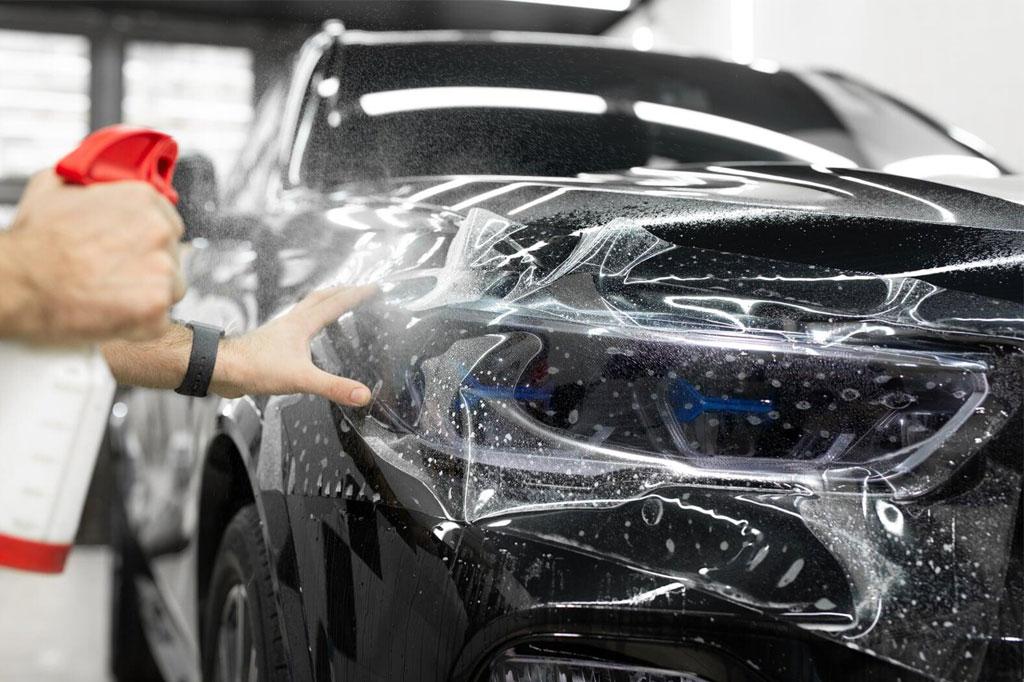As automotive manufacturers strive to meet ever-increasing demands for vehicle longevity, aesthetic appeal, and environmental sustainability, innovative surface‐protection solutions have gained prominence.
Among these, protective films based on polytetrafluoroethylene (PTFE) offer a unique combination of chemical inertness, low friction, and weather resistance, making them an attractive option for safeguarding automotive body panels throughout manufacturing, shipping, and the vehicle’s service life.
What Is PTFE and Why Film?
PTFE, better known by the trade name Teflon®, is a fluoropolymer renowned for its outstanding chemical stability, high thermal resistance (up to about 260 °C continuous), and ultralow coefficient of friction (≈0.05–0.10). When fabricated into thin films, typically in the range of 10–100 µm, PTFE retains these hallmark properties while remaining flexible enough to conform to complex shapes.
Key inherent advantages of PTFE films include:
- Chemical Inertness: Resistance to acids, bases, solvents, and fuels
- Thermal Stability: Withstands paint‐curing ovens and high‐temperature environments
- Low Friction & Non-Stick: Limits debris and particulate adhesion
- UV & Weather Resistance: Minimizes degradation from sunlight and moisture
These characteristics enable PTFE films to serve as an effective barrier against scratches, chemical attack, and environmental wear on painted or bare metal automotive body surfaces.
Applications on Automotive Bodies
1. Scratch & Scuff Protection
During assembly, transportation, and dealer handling, body panels are vulnerable to marring from tools, packaging, and environmental particulates. Laminated PTFE film applied to painted panels provides a sacrificial, self-lubricating barrier that resists abrasion and is easily removed cleanly without residue.
2. Chemical & Corrosion Barrier
Under-hood components and wheel wells are exposed to road salts, oils, and cleaning agents. PTFE film liners applied to vulnerable cavities or as an undercoating layer can inhibit corrosion by preventing direct contact between corrosive media and metal substrates.
3. Assembly-Line Slide Guides & Fixtures
In robotic assembly and paint-curing ovens, painted panels slide against conveyor guides and fixtures. Lining these contact surfaces with PTFE film dramatically reduces friction and minimizes paint flaking or chipping, improving yield and reducing rework.
4. Permanent Exterior Coatings
Beyond temporary protection, specialty PTFE‐reinforced powder coatings are being developed to serve as permanent body finishes. These offer self‐cleaning “Lotus effect” water repellency, reduced dirt accumulation, and enhanced gloss retention over the vehicle’s life.
Advantages Over Conventional Films
| Feature | PTFE Film | Polyethylene/Thermoplastic PU Film |
|---|---|---|
| Coefficient of Friction | 0.05–0.10 | 0.20–0.50 |
| Chemical Resistance | Excellent | Good |
| UV Stability | Outstanding | Moderate (degrades over years) |
| Temperature Range | –200 °C to +260 °C | –50 °C to +80 °C |
| Clean Removal | Residue-free | Sometimes leaves adhesive marks |
Compared to more commonly used polyethylene or polyurethane protective films, PTFE provides lower friction, broader thermal stability, and superior chemical and UV resistance, albeit at a somewhat higher material cost. When protection performance and long service intervals are paramount, PTFE films can deliver significant total‐cost‐of‐ownership (TCO) advantages.
Case Study: OEM Paint Shop Yield Improvement
A major European OEM implemented skived PTFE film liners on their underbody paint booths. Prior to installation, flash corrosion and basecoat flaking resulted in a 2.3% defect rate per vehicle; after retrofitting PTFE guides, defect rates fell to 0.7%, translating to annual savings of over €1 million in rework and warranty costs.
By calibrating protection durations and film coverage areas, automotive manufacturers can balance performance benefits with PTFE’s environmental footprint.
Implementation Best Practices
- Surface Preparation
- Ensure panels are clean and dry before film application.
- Use plasma or corona treatment for enhanced film adhesion where permanent lamination is desired.
- Application Technique
- For temporary protection: laminate with a low-tack adhesive; apply by hand or low‐pressure rollers.
- For permanent finishes: consider sintered PTFE‐reinforced powder spray coatings baked onto the body.
- Removal & Inspection
- Remove temporary films soon after paint curing to prevent adhesive over-curing.
- Inspect panel surfaces for any trapped debris; clean with a mild, non‐abrasive detergent.
You may also like
-
Expert Assessment of Fuel Cap Locking Mechanisms and Their Reliability
-
Complete Guide on Ford Mustang Performance Maintenance
-
Luxury Car Rentals for Stunning Clearwater Coastline Photoshoots
-
Singapore Scrap Car Guide: Get Maximum Value From Your Vehicle
-
Choosing the Right Service for Your Car’s Lug Bolts: When to Seek Professional Help

